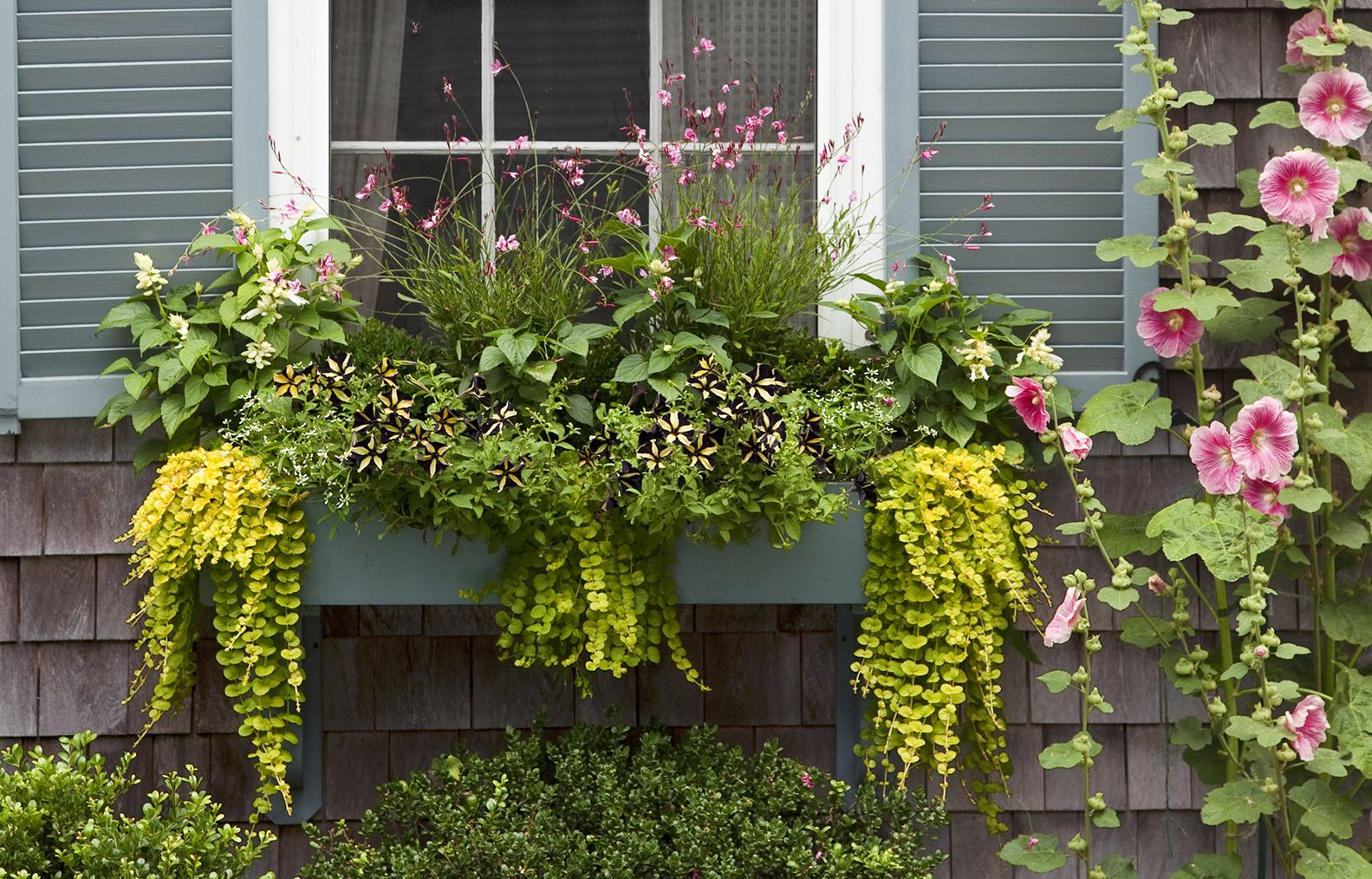Window planter boxes are a great way to make your home a more inviting space from the outside. These small gardens fill your exterior with blooms and greenery along your home. With careful planning and creativity, window boxes transform ordinary windows into focal points reflecting your personal style and home’s architecture.
Window Planter Box Ideas
From multi-colored annuals to evergreen shrubs, you have many options for creating window planter boxes. When planning your garden, factor in light conditions, your home’s architectural style, and the view from the inside and outside.
A Balanced Approach
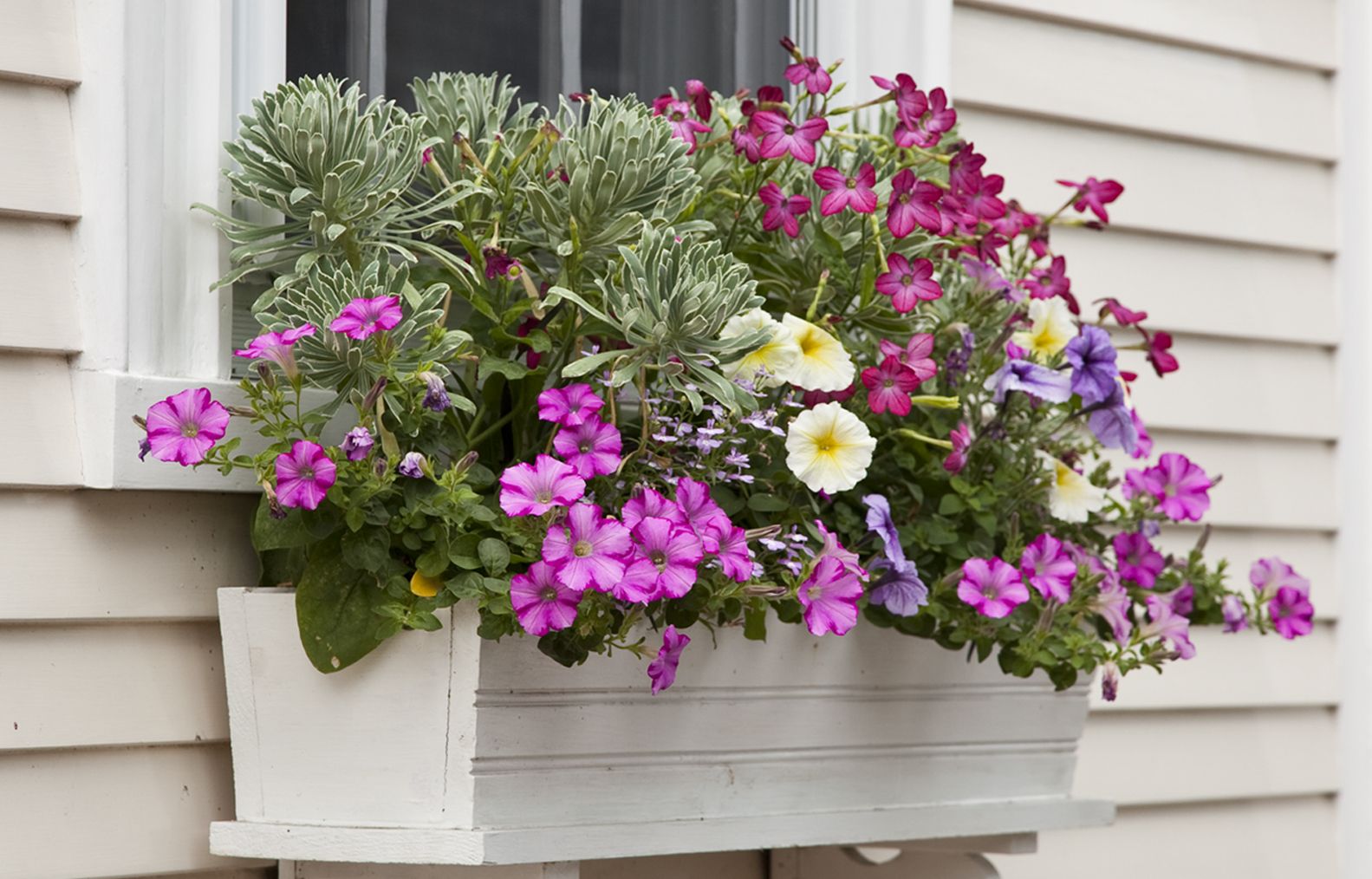
Creating a balanced window box starts with understanding your space and light conditions. Full-sun areas are perfect for annuals, while plants that grow in shadier areas should be grown in the less sunny areas of your home. Choose a box that matches the width of your window and use secure and durable brackets to withstand weather conditions.
When selecting plants, research their growth habits and how they’ll interact with one another. Arrange taller plants in the center or back of the box, with medium-height plants in front of them, and trailing plants over the edges. This arrangement creates a layered, dimensional look.
Shown: The silver leaves of this euphorbia tone down a mix of striped petunias, purple lobelia, and hot-pink nicotiana.
Soil, Fertilizer, and Planting Strategies for Year-Round Installment
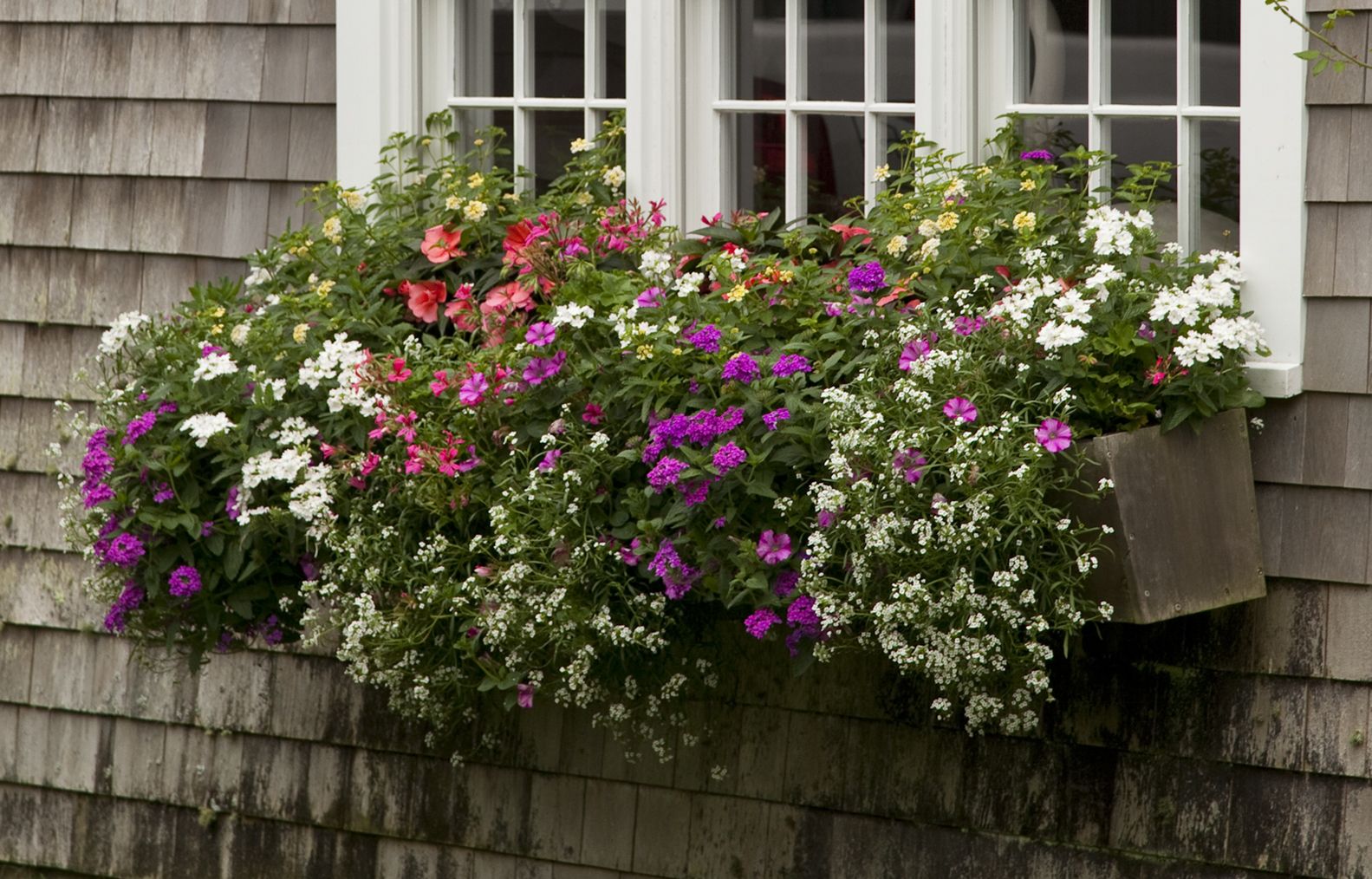
Maintaining a window box garden throughout the year requires attention to soil quality, water, and fertilization. Use a potting mix that drains well to prevent waterlogging, which can lead to root rot. During hot weather, check the soil moisture daily and water when it feels dry about half an inch below the surface. Consistent monitoring keeps plants healthy.
Fertilization is especially important for container plants since nutrients wash out with frequent watering. Apply a water-soluble fertilizer every two weeks, diluted to half strength. Another option is to use a one-time, slow-release granular fertilizer at the beginning of the growing season.
Swap out plants as the seasons change to keep your window boxes in good condition year-round. Replace cool-weather plants like pansies and cyclamen with varieties that grow in the heat, such as marigolds and petunias. In fall, add ornamental kale or mums for autumnal colors. For winter, dwarf evergreens or winter-blooming plants like hellebores are known for withstanding cold temperatures.
Shown: A cheery combo of lantanas, impatiens, geraniums, petunias, and sweet alyssum spills over a deep box that spans three windows.
Window Flower Boxes: Use Spillers
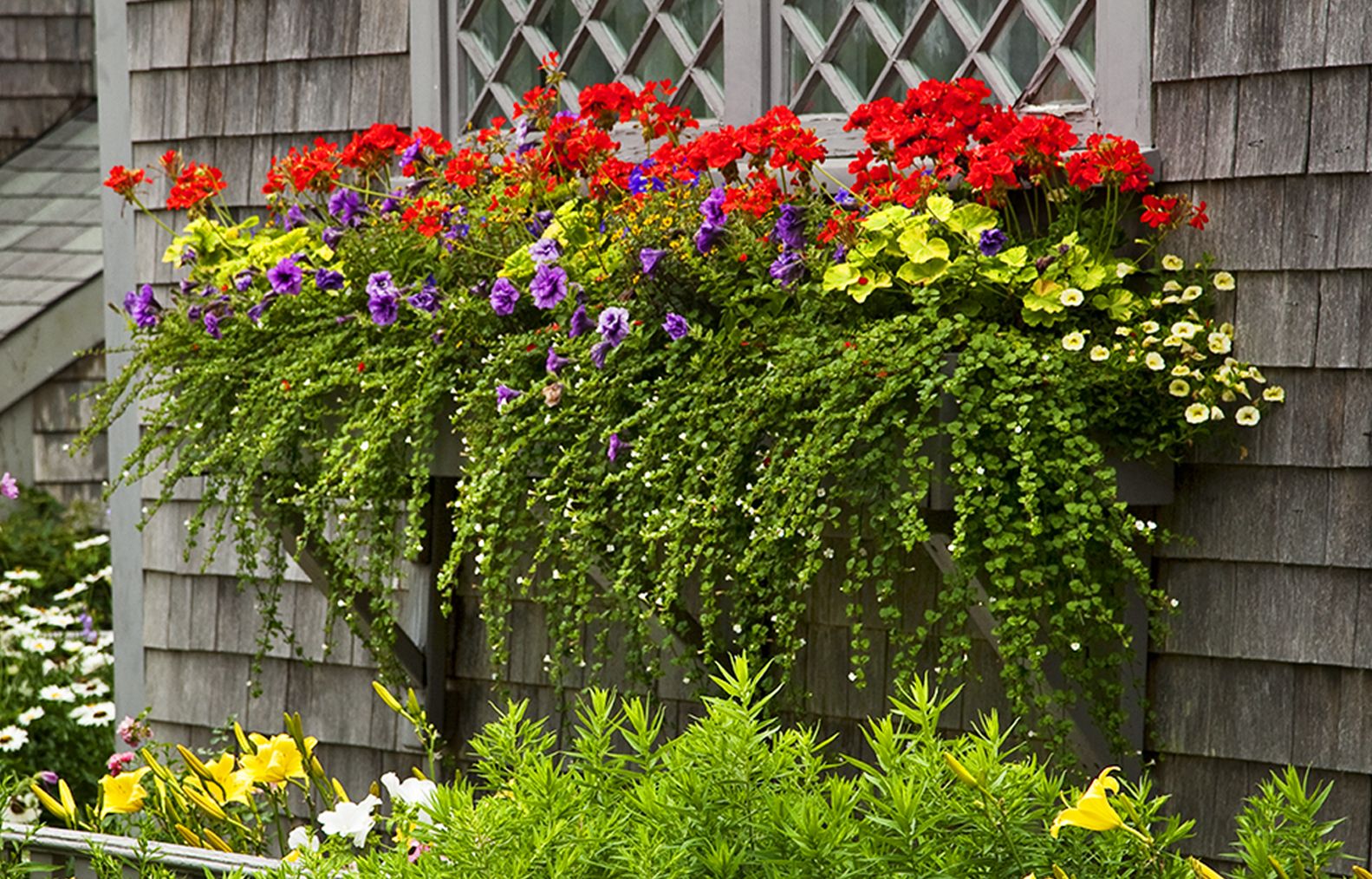
Trailing plants, or “spillers,” create depth and soften the edges of your window box. These plants help to tie together your window box. When using spillers, consider their growth rate and final length so they don’t block plants and windows. Some choices for spillers include:
- Bacopa
- Creeping Jenny
- Dichondra
- Ivy geranium
- Lobelia
- Sweet potato vine
Shown: A fringe of white-flowering bacopa beneath scarlet geraniums, double petunias, and pale-yellow calibrachoa calls attention to these windows with lattice muntins.
Ivy and Vine
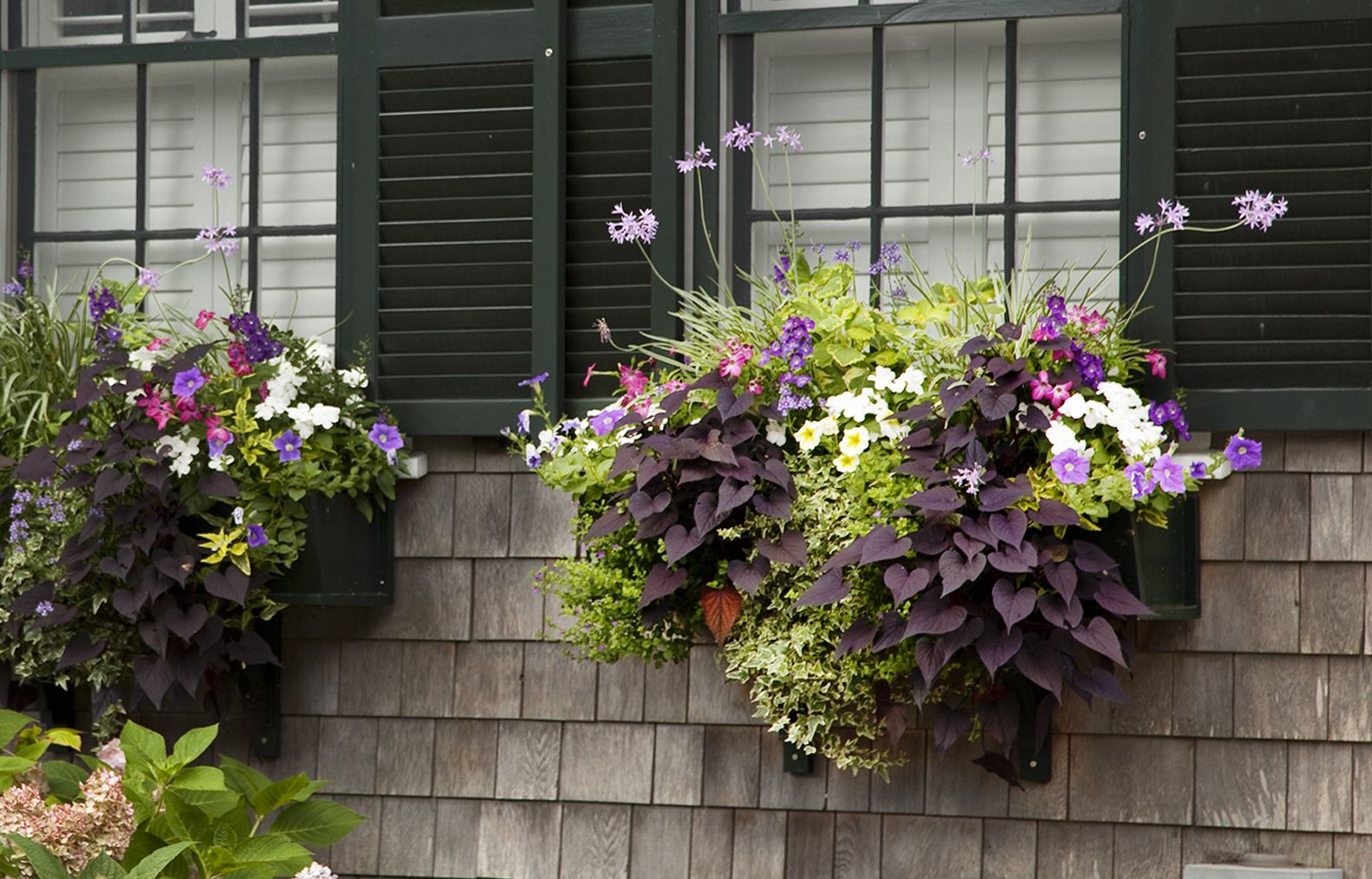
Combining different textures and colors can make your window box more lively. Variegated ivy and purple sweet potato vine provide a nice contrast against upright flowering plants, adding depth and interest. Whether you prefer a cohesive color scheme or a contrasting mix, using different plants can make your window box more unique.
Draping Plants
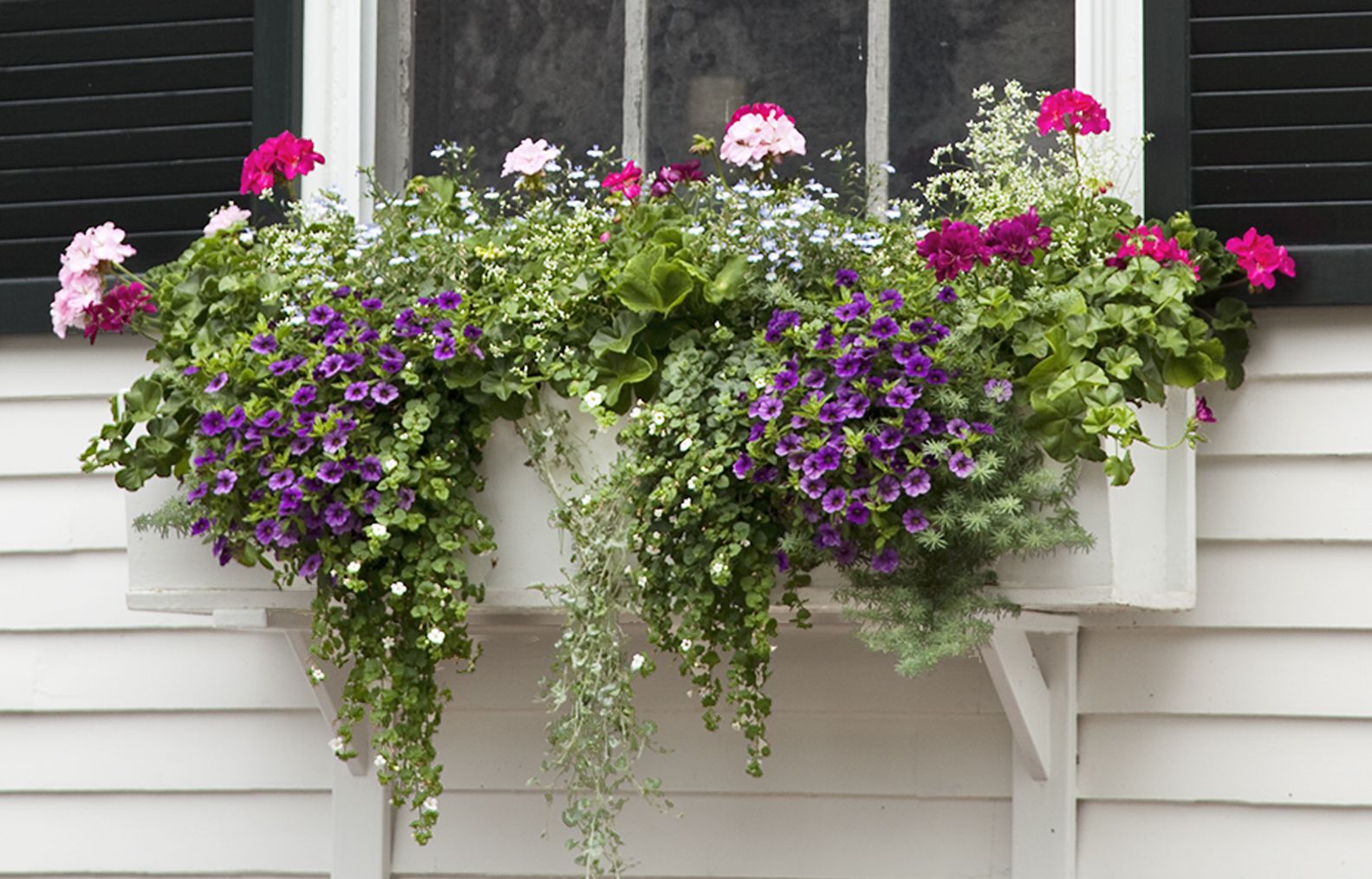
Draping plants like bacopa, dichondra, and parrot’s beak create a softer look as they spill over the edges of your window box. These plants work well with upright blooms such as geraniums, lobelia, and calibrachoa to create a fuller appearance.
Sweet Potato Vine
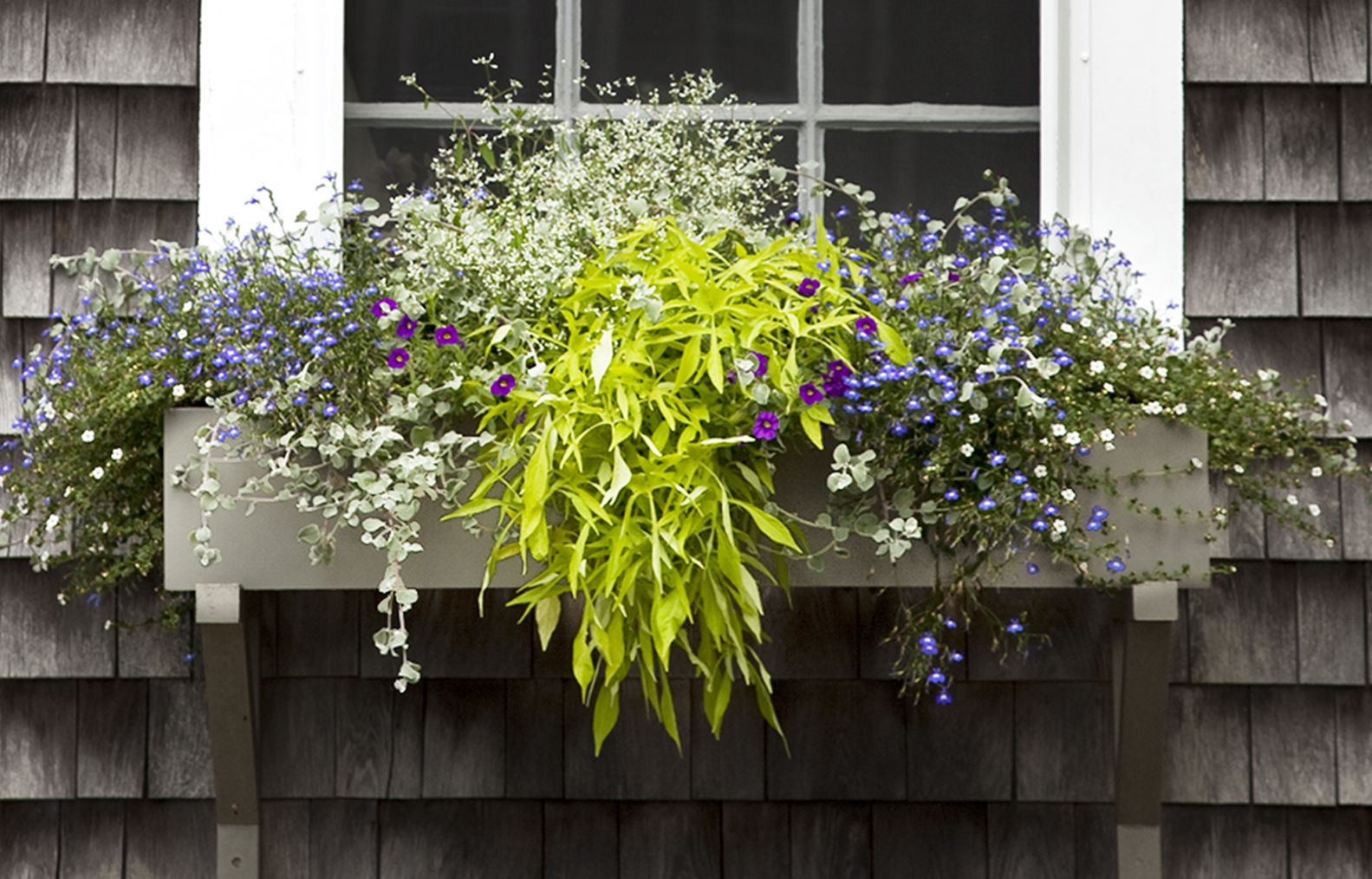
The vibrance of the sweet potato vine can be a bright focal point in your window box. It grows quickly and trails downward, making it a great choice for adding color and texture to the display. The bright leaves stand out against more muted tones for a dynamic look.
Pops of Contrasting Flowers
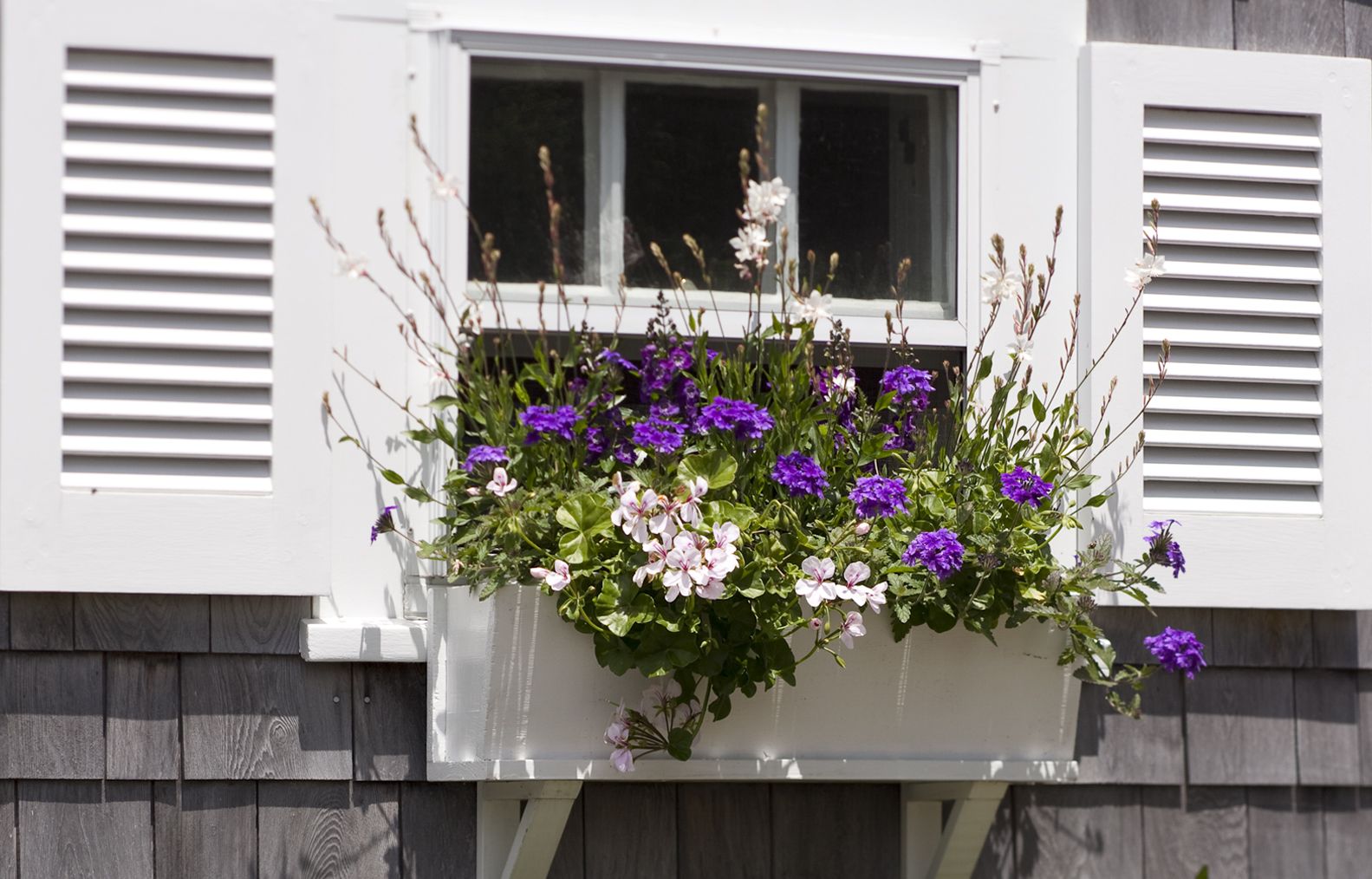
Using contrasting colors in your window box highlights different elements and plants across the display. Combine cool-toned flowers like purple verbena with warmer hues such as yellow lantana for a more dynamic arrangement.
Simple Display of Flowers

Sometimes, a simpler approach can be just as pretty and unique as vibrant contrasts. Mass planting impatiens in complementary shades of pink and white creates a classic look perfect for shaded areas. This adds charm and personality to your home without overwhelming the existing space.
Gold Leaf
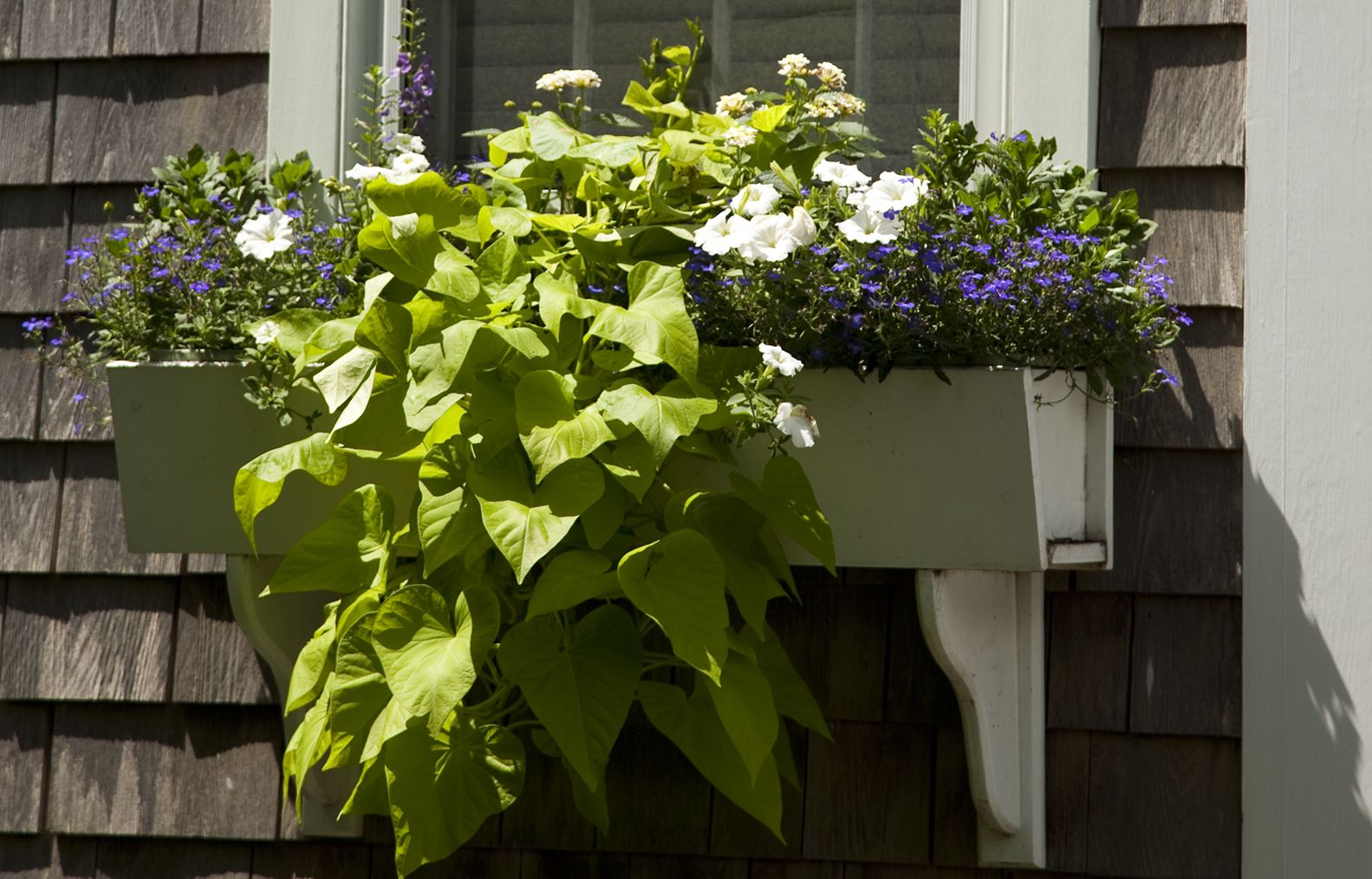
Incorporating plants with golden hues, such as sweet potato vine, can add a bright element to your window box. These leaves provide a nice contrast to both flowers and darker plants.
Evergreens for Structure
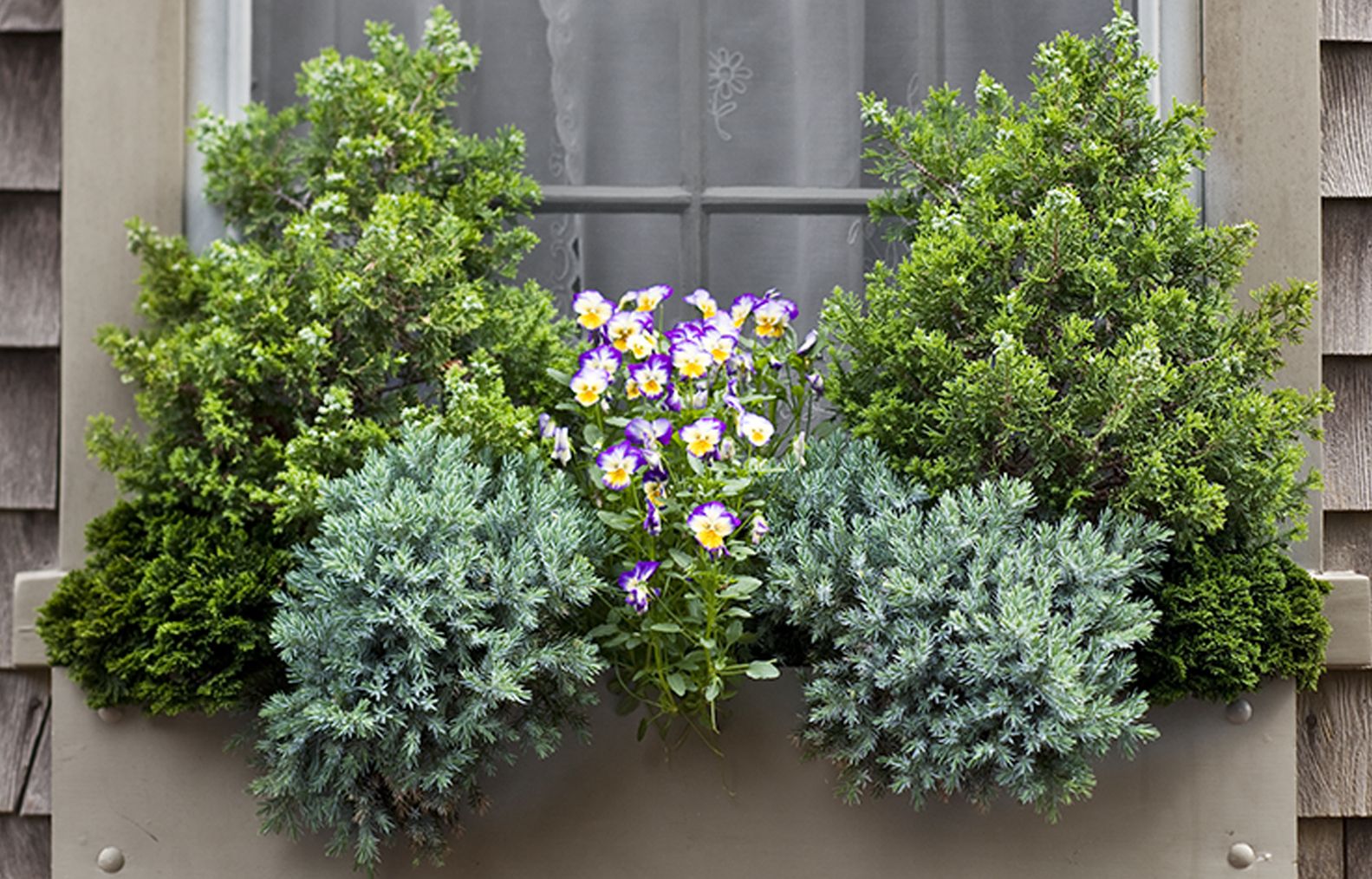
Dwarf evergreens are great choices for adding year-round structure to your window box. These plants provide a backdrop for seasonal flowers and can be easily shaped to maintain their desired size and form, keeping your window box organized throughout the year.
Floating Spheres
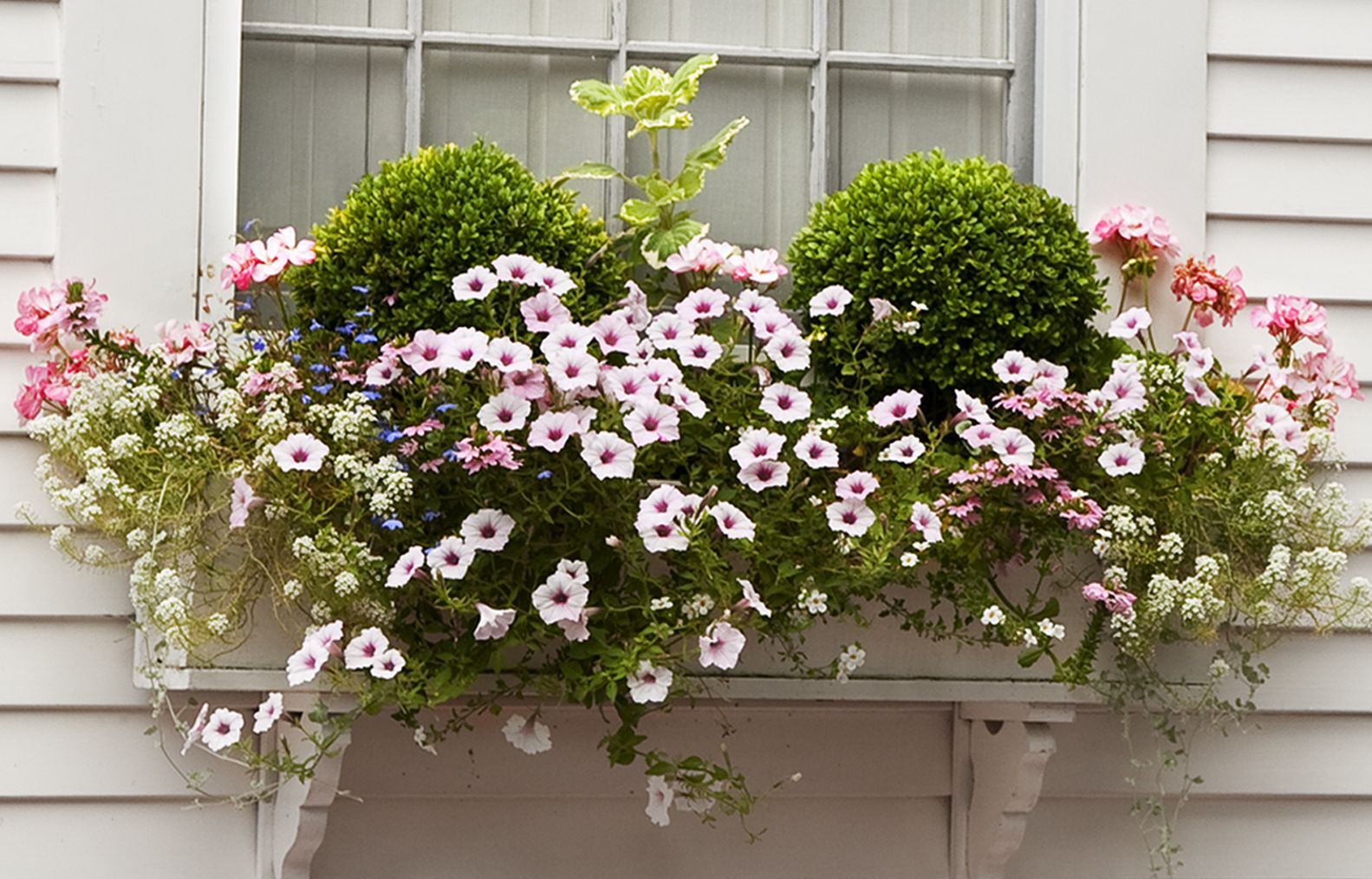
Boxwood balls provide a more formal look to contrast softer, flowering plants. With proper maintenance, potted boxwoods can survive year-round in window boxes in climate zones six and above.
Sculptural Spruce
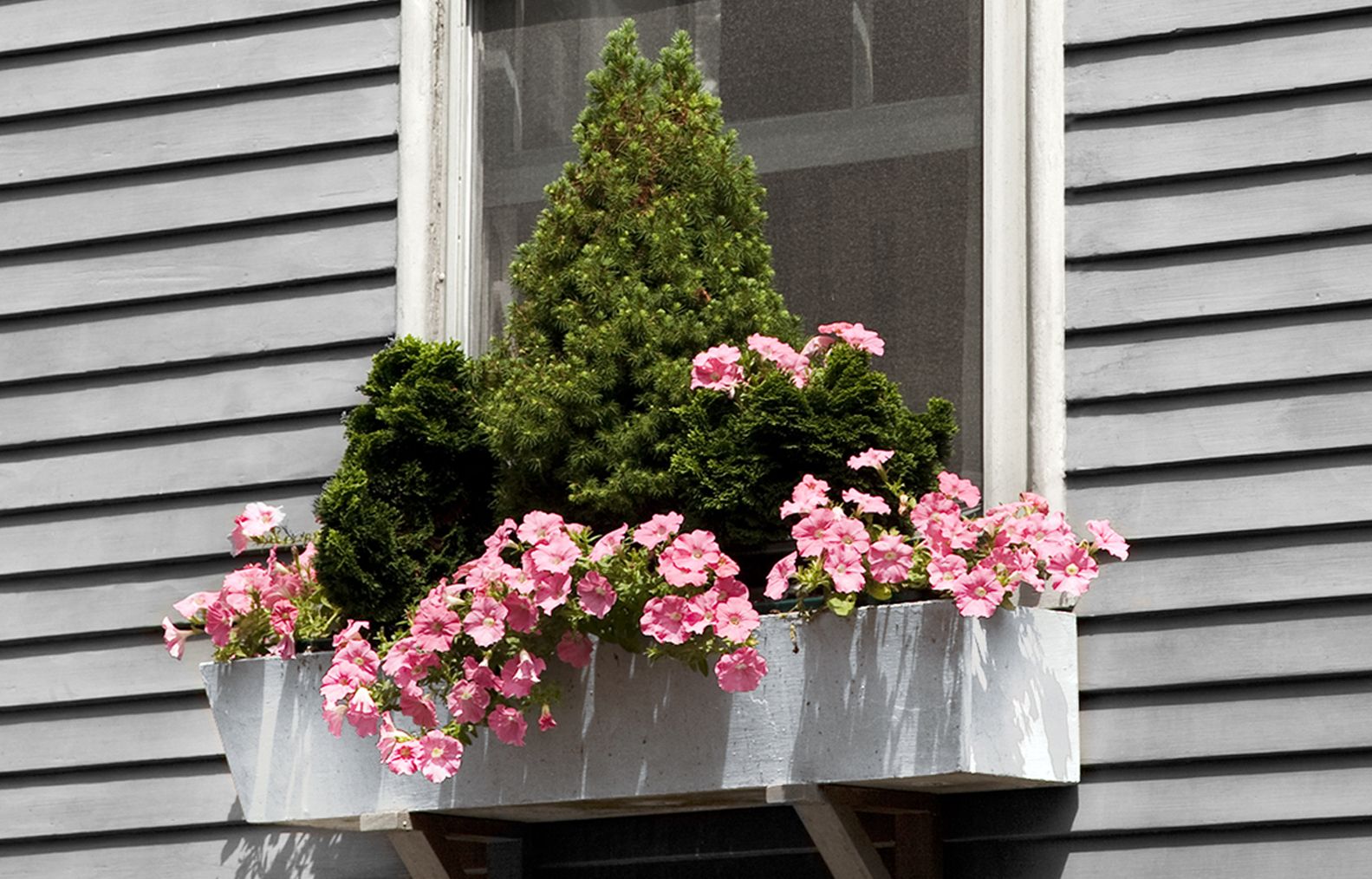
A dwarf Alberta spruce can serve as a privacy screen in your window box. Pair it with other evergreens like dwarf Hinoki cypress and soften the look with flowers for a balanced, year-round display.
Foliage for Steady Color
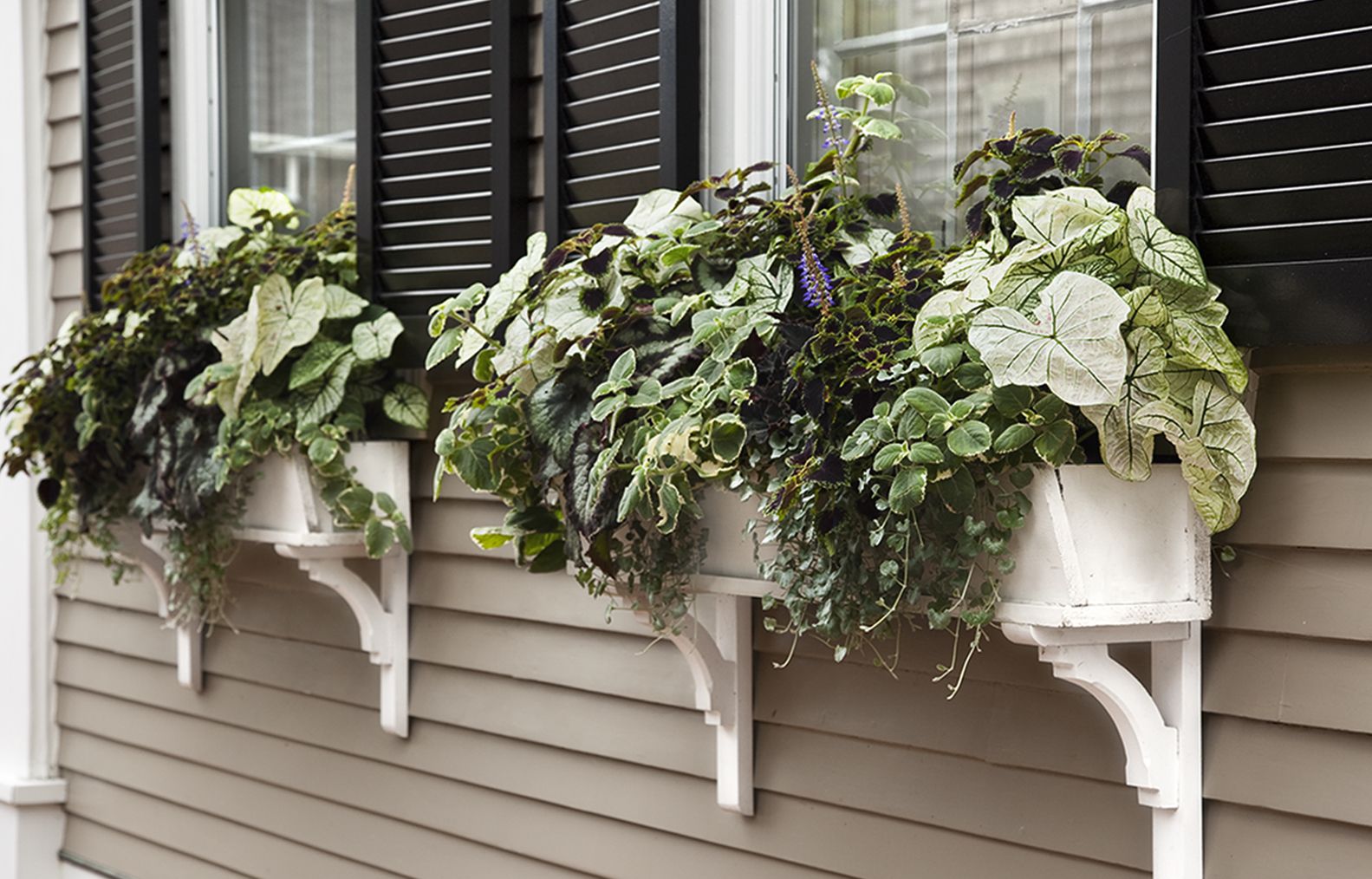
While flower plants provide color, foliage plants have consistency throughout the growing season. Combine plants with different leaf shapes, sizes, and colors to create different textures in your window box. With this approach, your window box display remains interesting even when blooms fade.
Seasonal Plants
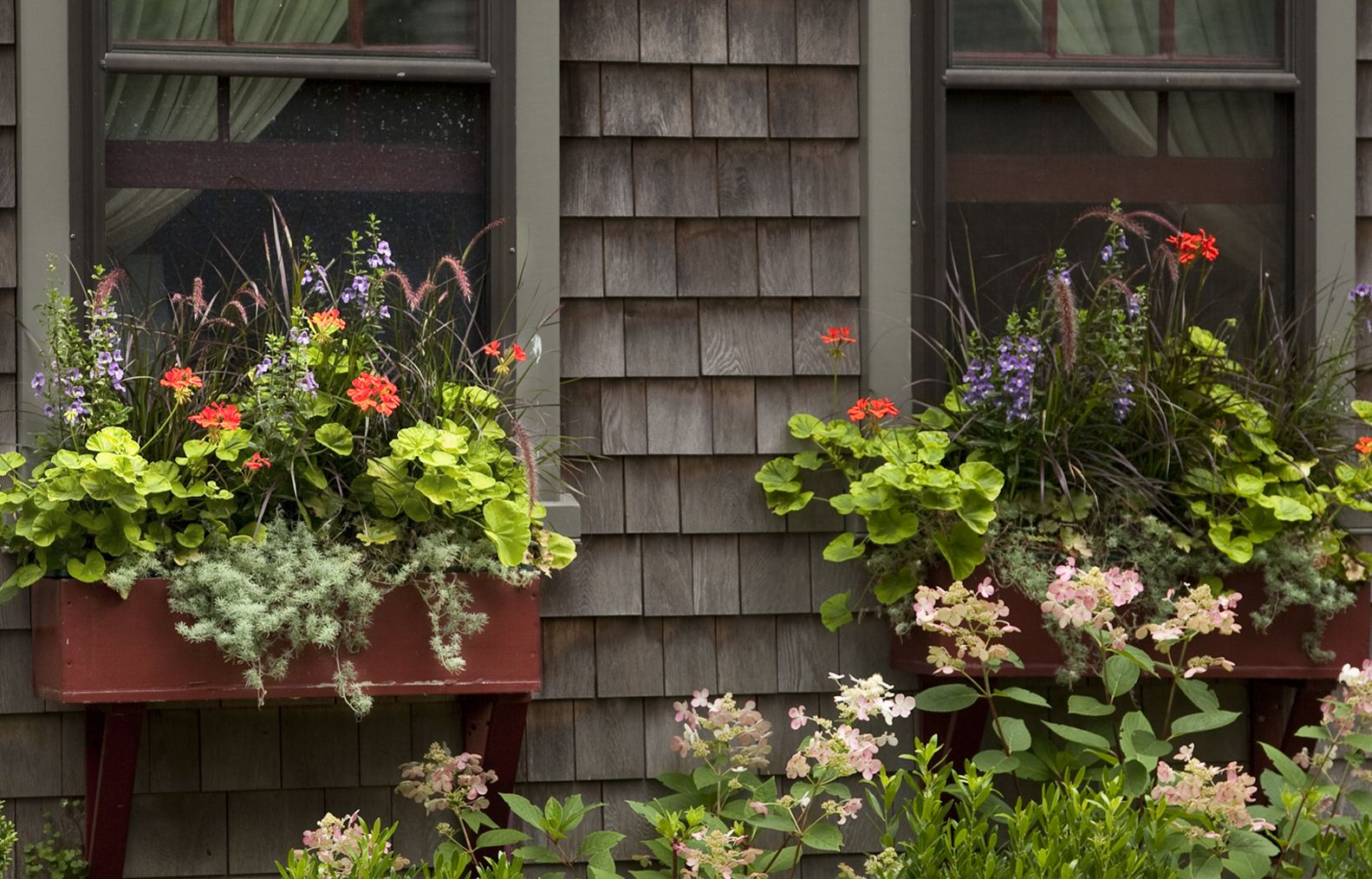
Incorporate plants that change with the seasons to keep your window box healthy year-round. Ornamental grasses provide upward height and develop plumes in the fall. Seasonal variation keeps your window box healthy throughout the year without too much maintenance.
Blue and White Flowers
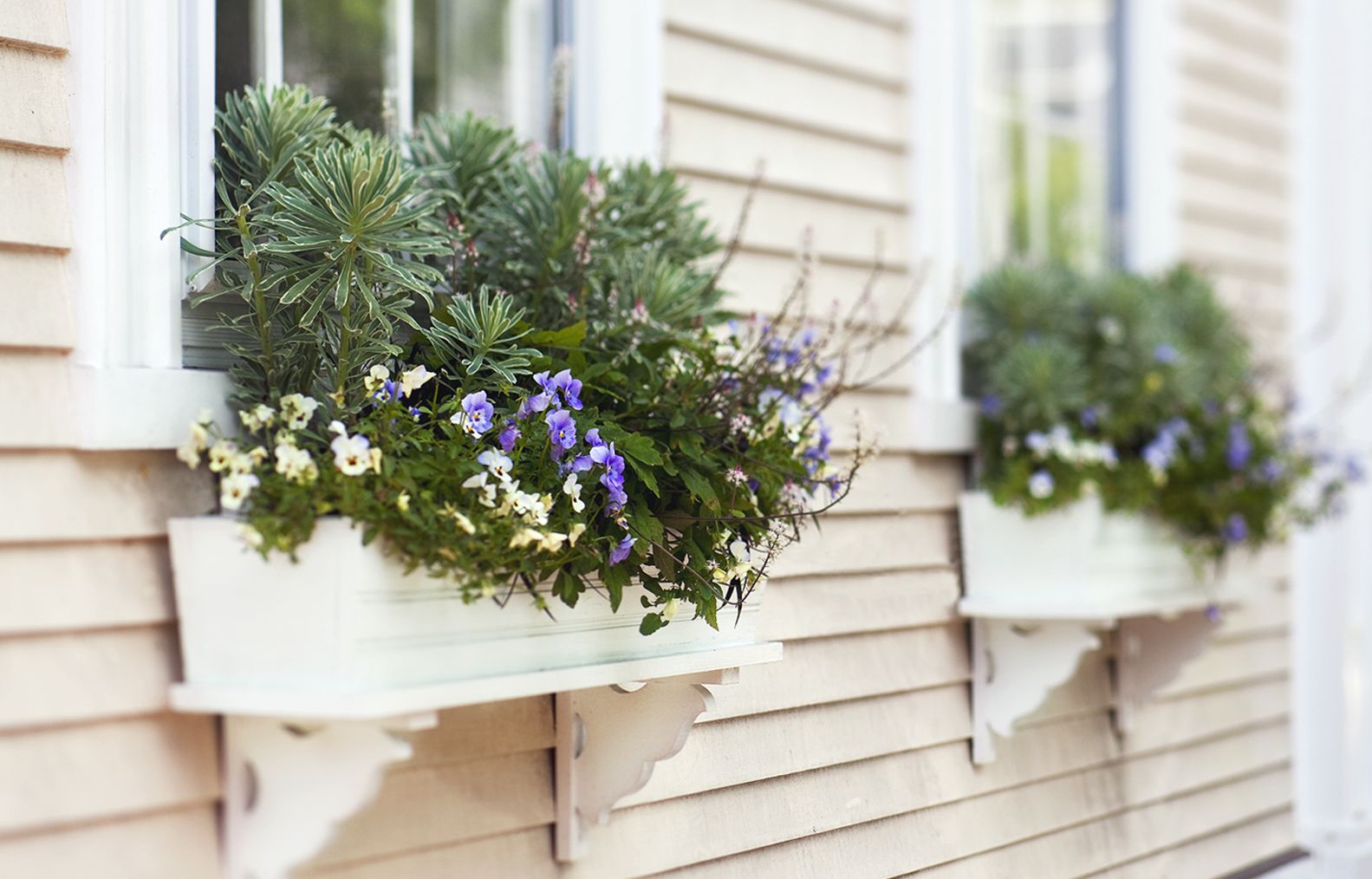
A classic color combination of blue and white flowers creates a refreshing look perfect for summer. Incorporate plants with silver hues, such as dusty miller or silver euphorbia, to brighten this color scheme.
Butterfly Watch
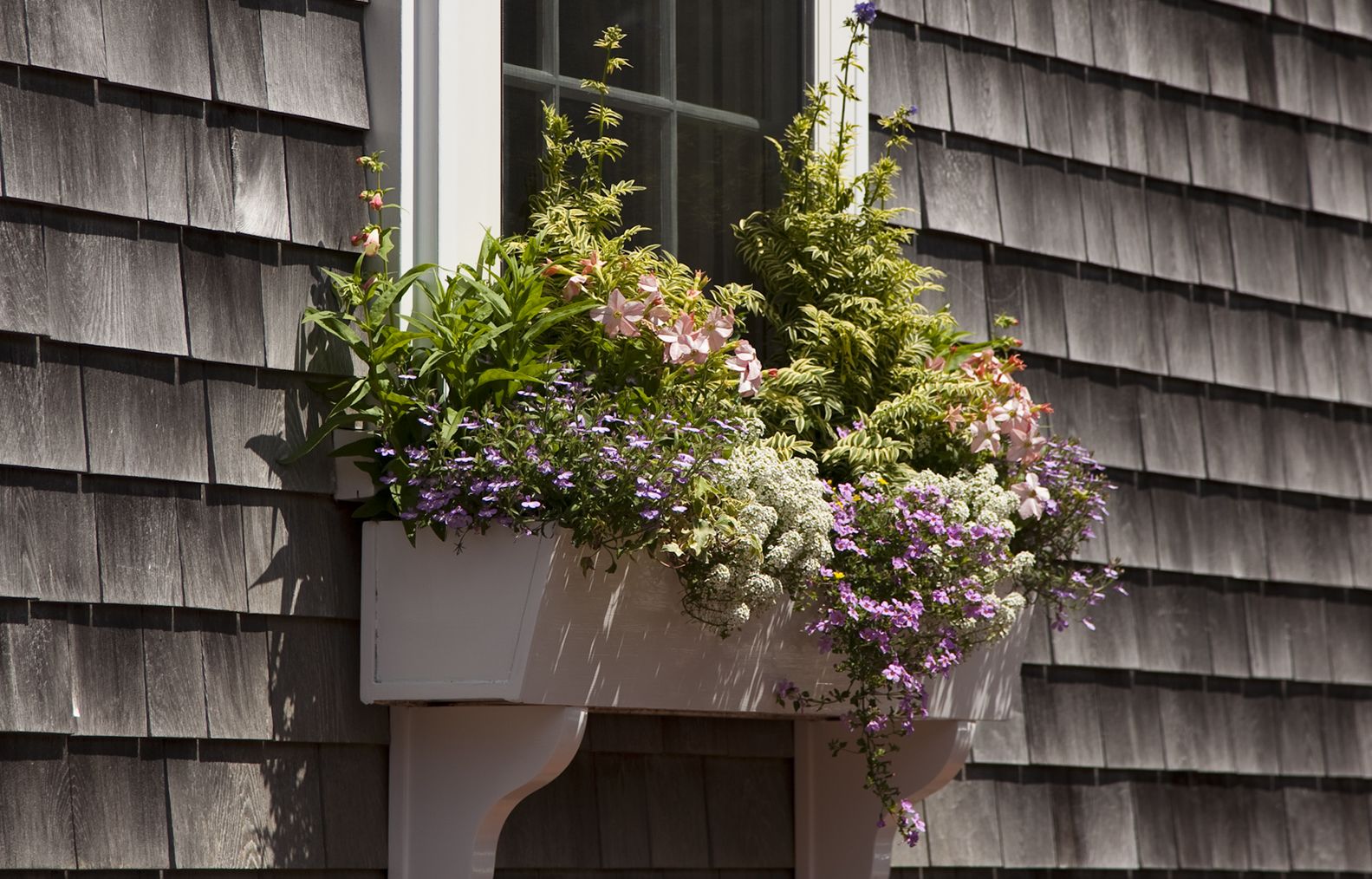
Attract pollinators to your window box by including plants that butterflies and bees love like Jacob’s ladder, sweet alyssum, and penstemon. These plants create a nice environment for pollinators and wildlife, adding an extra layer of interest to your display.
Mirror Image
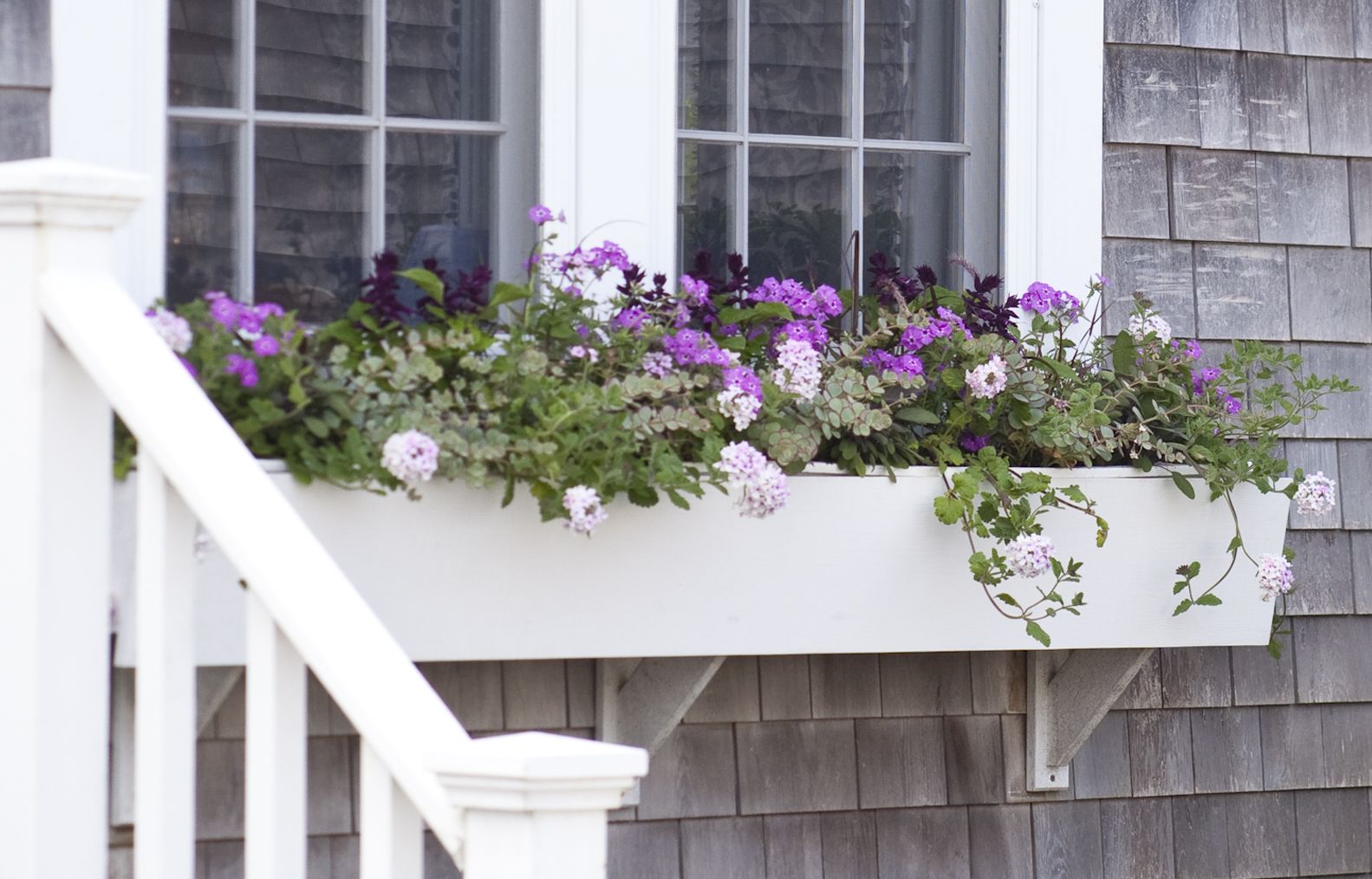
Echoing the colors and textures of your garden in your window box creates a cohesive look. This technique helps integrate your window boxes with the overall landscape of your home. Reflecting garden elements in your planter boxes makes the space feel more unified.
Heightened Drama
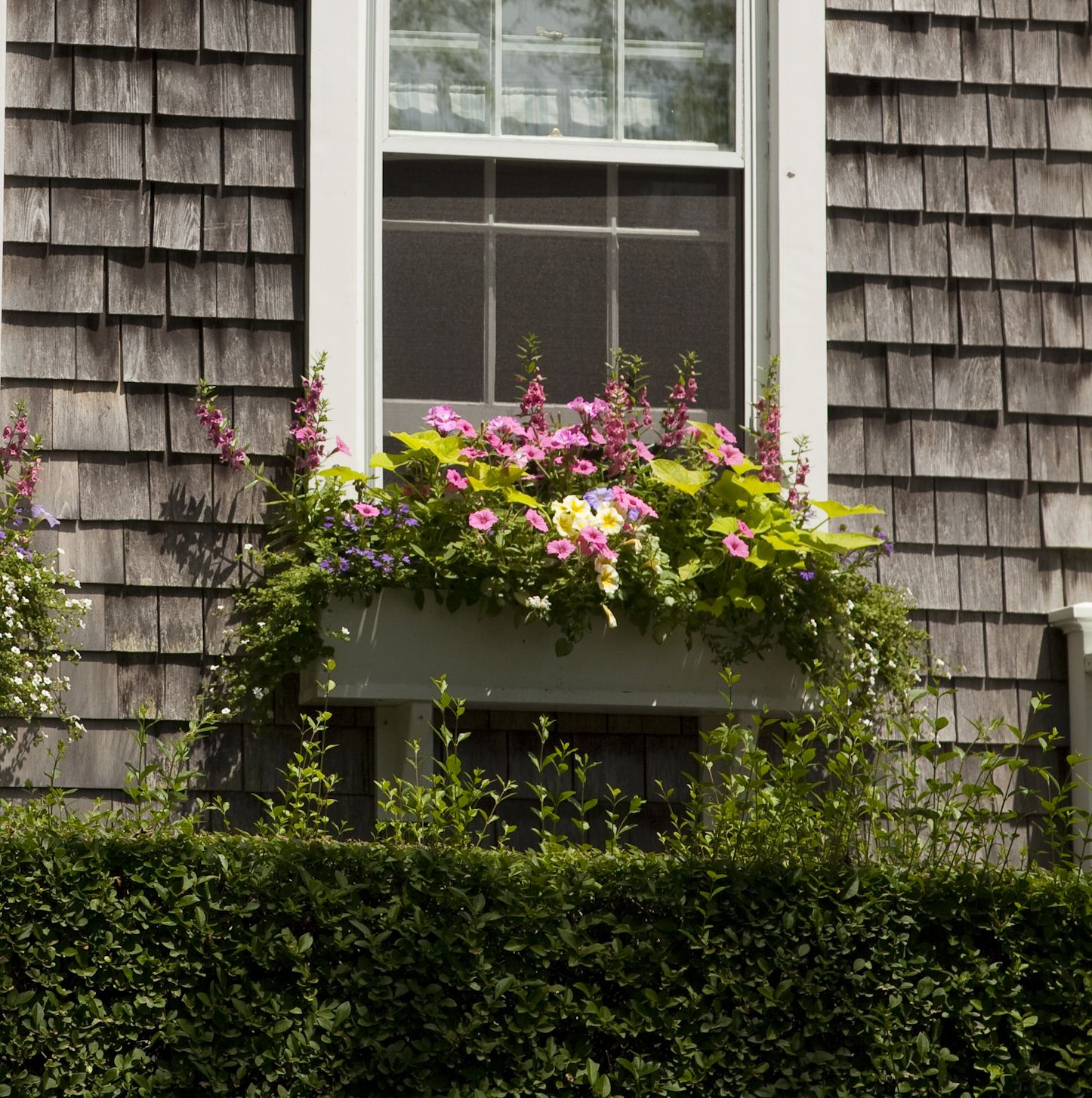
For a bold effect, combine plants with contrasting colors and growth habits. A mixture of upright and trailing plants in complementary hues creates a dynamic display. This approach helps your window boxes stand out as focal points across your home.
